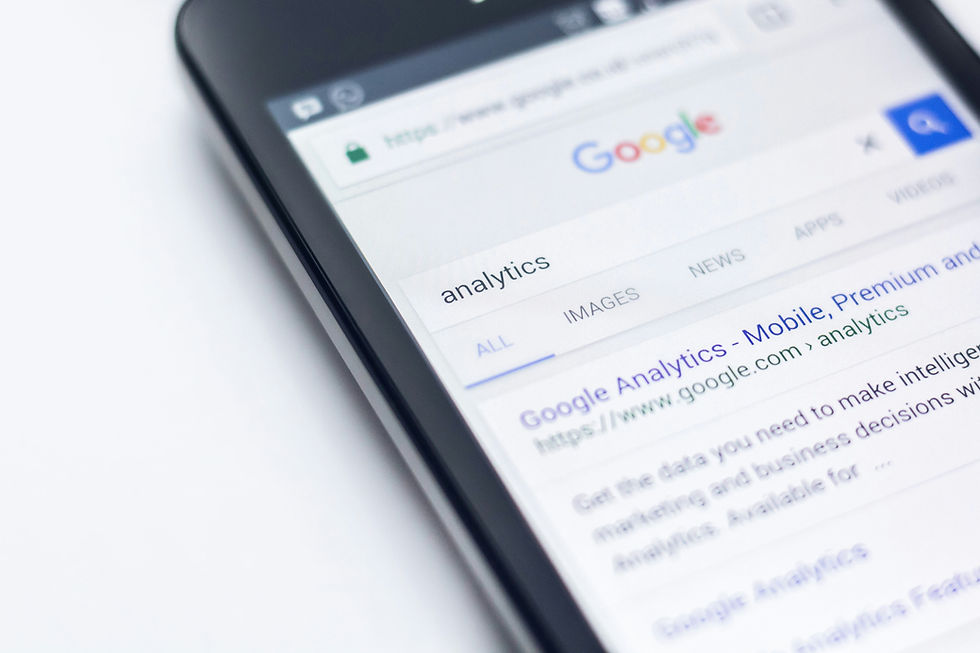What’s So Important About Website Accessibility?
- GROW Marketing Agency

- Jul 2
- 4 min read
Website accessibility, aside from being a core tenant to Google’s EEAT guidelines, is a way to ensure that your website visitors have a seamless experience. Sadly, many sites don’t comply with best practices and guidelines, meaning that some users find these websites as either difficult or completely impossible to navigate.
If you feel like your website doesn’t have all the accessibility options to should, you aren’t completely out of luck. There are plenty of ways to address and enact accessibility for all viewers so anyone that comes to your site can navigate it easily. The World Health Organization (WHO) estimates that around 16% of the population has some form of disability that impacts their life, which you can assist with by making your site adhere to accessibility best practices.
What is Website Accessibility?
No, we aren’t referring to the ability to open the page and simply get onto your website. Website accessibility refers to the practice of creating websites that are usable for all visitors, regardless of disability or impairment. To meet this criteria, websites must comply with certain design and development guidelines that ensure your site is set up to accommodate people with disabilities, so everyone has roughly the same experience regardless of ability.
Is your website unintrusive and intuitive to navigate? Is it designed with the audience in mind instead of just your business in mind? While websites are a great way to market your business, they are intended for your audience to find you and understand you. This means that when you are creating your website, it should be done with your client’s best interests in mind first and your marketing second.
Web accessibility shouldn’t be an afterthought in your design scheme, as the investment will increase your brand loyalty, advocacy, and lead to improved SEO engagement.
The POUR Principles and Their Impact on Your Website

The Web Content Accessibility Guidelines (WCAG) states that a website should follow four key principles to ensure their website is accessible. Named the POUR principles, these stand for:
Perceivable
Operable
Understandable
Robust
Each element is something that adjusts the way content is viewed on your website, either as an addition or as a mainstay feature, so anyone can cross your website with ease.
Perceivable
The ability for visitors to perceive or understand and be aware of the content on your website is imperative to your success. Perceive doesn’t always equate to seeing with your eyes, as some individuals with blindness or low vision will use screen reading software to convert text to speech or braille. When you create content for your website, it should be done in a way that makes it easily digestible to any reader.
Operable
Operable websites are those that can be used by visitors without disruption. This also means that users can navigate the website easily, from selecting links in text to navigating the menus and pages. The most operable sites are those that keep it simple. No flashing lights or hundreds or menu options, just simple, functional copy and menus that take your audience where they need to go.
Understandable
It almost goes without saying, but the content on your site should be understandable from a written and graphic sense. People with cognitive disabilities are visiting your site all the time, so if the content is too jumbled or verbose, it’s going to make it difficult and frustrating for some people to keep up. Those who don’t speak English as their first language will struggle to follow what you’re saying.
Robust
Robust content means that your content is easily interpreted by people with various assistive technologies like screen readers. Your HTML should be written in a way that allows assistive technology to parse your code without visual reference. This isn’t the same as being perceivable, where content is created with the intention of being easily understood, or operable, where content is designed in a way to be undisruptive.
Making Your Website as Accessible as Possible
There are a few different ways to set your website up to be as accessible as possible. You can use text alternatives on your pages, like images, videos, and audio, to reduce the amount of content that needs to be read or parsed out. Time-based media, like audio and video content, can have captions enabled and transcriptions. When creating content, make sure it’s easy to see and hear. Clear diction, visuals that have those with color blindness in mind, and toggles for color contrast to give viewers the ability to alter the experience as they wish. Accessible drop-down menus that have a time delay for those that disengage from it help as well by providing time limitations for certain users that are unable to steady their mouse. Avoid flashing lights or blinking content, and structure your web pages logically and without error so anyone can read and appreciate the content.
Creating Websites That Make Sense
Accessible websites that make sense aren’t hard to create, but do require intention behind them. It’s a slight shift in the way you address content and can be difficult for some people to craft. If you want a stress-free website creation process that takes POUR into account, GROW Marketing Agency is the answer. We create content with the end user in mind while also staying mindful of your brand and marketing strategy.
All of our websites are designed to be accessible to anyone, anywhere, while providing your audience the information and engagement necessary to educate them on your services and move them down the marketing funnel. If you’re ready to create a website that makes sense for all audiences, contact GROW today.




Comments